Creating a Cozy Space: Tips for Setting Up Rabbit Nesting Box
Set up the perfect rabbit nesting box with our cozy and practical tips. Create a snug haven for your bunny to feel safe and comfortable.
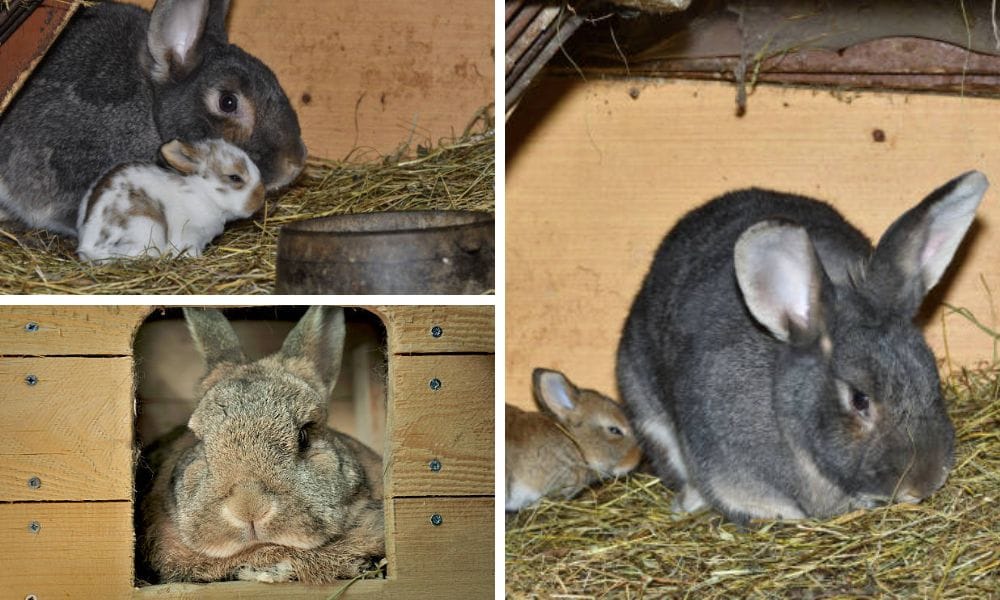
Key Takeaways:
- Understand the importance of a proper rabbit nesting box for your pet's comfort and safety.
- Learn how to select the right materials and dimensions for a rabbit nest box.
- Discover practical tips for maintaining and cleaning rabbit nesting boxes for the health of both doe and kits.
Rabbits are delightful companions that require a comfortable and safe environment to thrive. A crucial element of their habitat is the nesting box, which serves as a sanctuary for rest, breeding, and raising their young. In this article, we'll explore how to create the perfect nest box for your furry friend, ensuring it's cozy, secure, and conducive to their well-being.

The Ideal Nest Box: Selecting the Right Materials
When it comes to constructing a rabbit nesting box, the choice of materials is paramount. Wood is a popular option due to its insulation properties, which keep the nest warm in winter and cool in summer. However, it’s essential to select untreated wood to prevent any harm to your rabbits. For the box floor, hardware cloth can be used to ensure easy cleaning and proper ventilation, but it should be covered with a solid material to protect the rabbits’ feet. When assembling a wooden nest box, you can use nails or pin nails to securely fasten the sides and base together for added stability.
Size Matters: Dimensions for Comfort
The dimensions of the nest box should cater to the size of your rabbit. A standard size for most breeds is around 18 inches long, 10 inches wide, and 10 inches high. This size allows enough space for the doe to move around comfortably while providing a cozy area for the kits. If you have larger breeds, you may need to adjust the dimensions accordingly. A big nest box provides ample space for comfort and safety, helping to prevent injuries and making it easier to handle the rabbits. On the other hand, a small box may be more suitable for young kits or smaller breeds, ensuring they feel secure and have easy access. Always ensure there’s enough room for the mother and her babies to nest without feeling cramped.
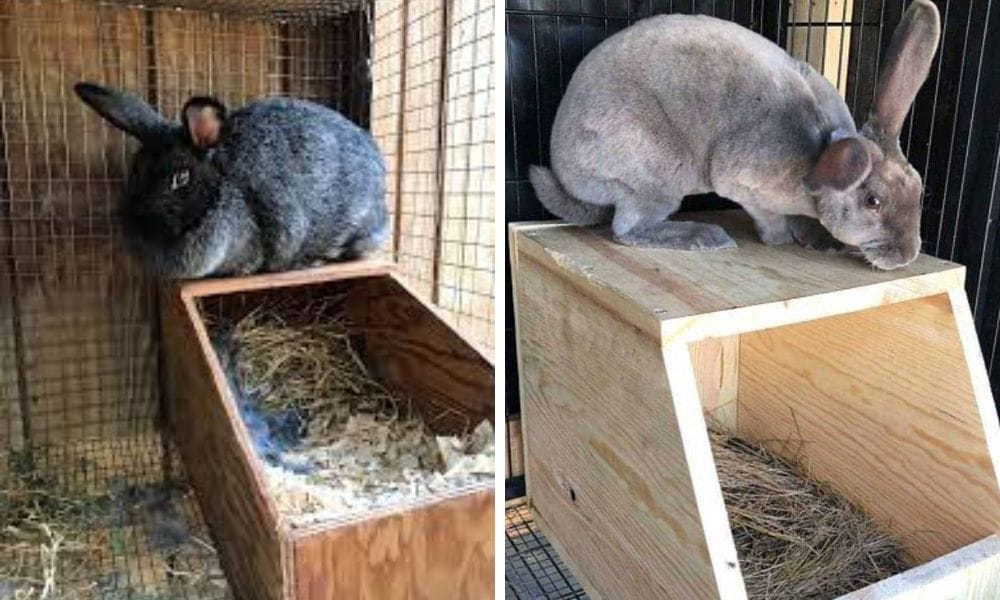
A Secure Foundation: Where to Place the Nest Box
The placement of the nest box within the rabbit's cage is crucial for the animal's sense of security. It should be positioned in a quiet corner, away from high traffic areas, to provide a sense of safety. If the cage has multiple levels, the bottom floor is the best location for the nest box to prevent any risk of the kits falling from a height.
Nesting Box Innovations: Enhancing Comfort and Safety
When considering the construction or purchase of a rabbit nesting box, innovative features can make a significant difference in the comfort and safety of your furry friends. For meat rabbits or pet bunnies, a nest box that incorporates hardware cloth in its design can provide excellent ventilation, especially during the warmer months. This material allows for air circulation while keeping the kits secure inside. Additionally, the use of hardware cloth can facilitate easy cleaning, as droppings and soiled bedding can be more readily removed, ensuring a hygienic environment for both mom and babies.
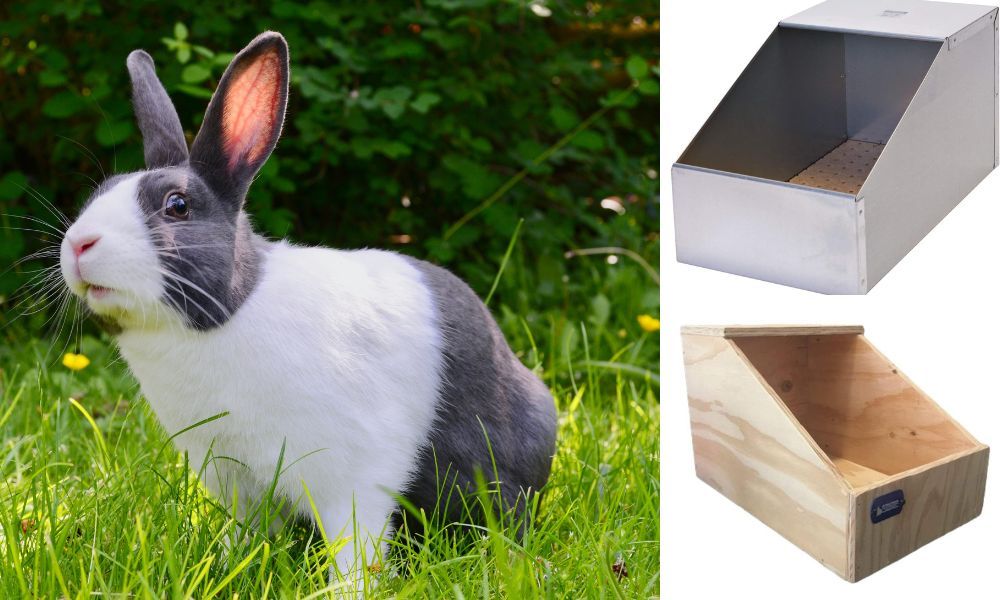
In the realm of safety, the edges of the nest box should be free from sharp points that could harm the rabbits. Some rabbit owners treat the wood used in construction with a non-toxic sealant to prevent moisture damage and to make the box more durable. It’s also important to review the box’s stability; a well-built nest box should not easily be dragged or tipped over by the doe. High sides on the nest box help prevent kits from being dragged or falling out, and a secure lid can provide easy access for inspection and cleaning while keeping the nest protected. By focusing on these innovative features, you can provide a high-quality nesting box that prioritizes the well-being of your rabbits.
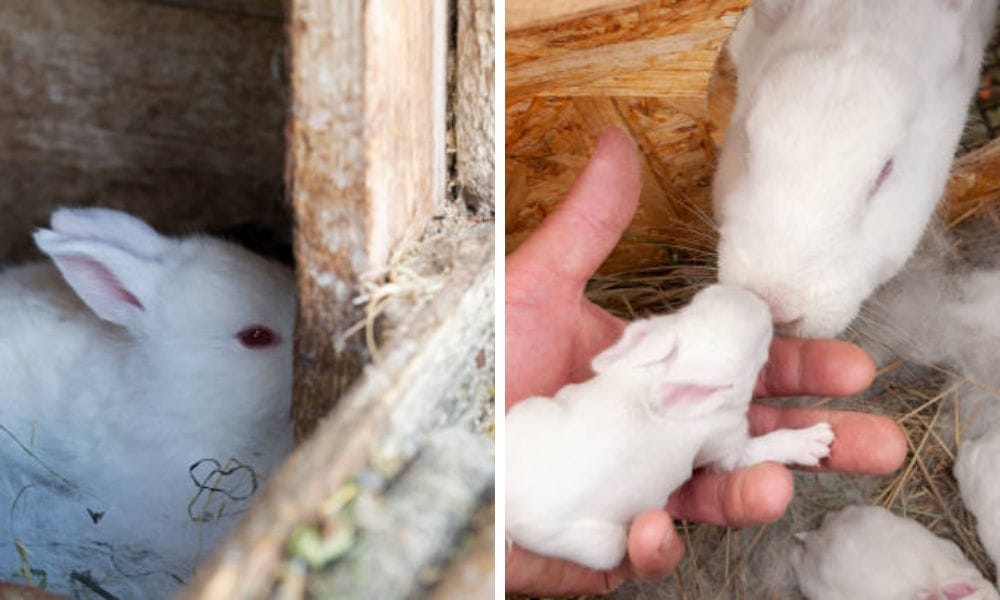
The Role of Accessories in Rabbit Nest Boxes
Accessories within the rabbit nesting box can play a pivotal role in creating an optimal breeding environment. For instance, adding a removable shelf or a lip around the edges can prevent kits from being accidentally dragged out of the box by the doe. This addition is particularly useful when the box is placed within larger cages, as it provides an extra layer of security for the newborns. Moreover, accessories like a litter pan that can be attached and replaced easily contribute to maintaining cleanliness, which is crucial for the health of the rabbit family.
Another accessory to consider is a soft, warm lining for the floor of the nest box, especially during winter. This can be made from materials such as straw or hay, which not only keep the babies warm but also can be easily removed and replaced for cleaning. Regularly checking and managing the contents of the nest box, including bedding, hay, and the fur pulled by the doe, is essential for maintaining warmth and cleanliness for the kits. In summer, a lighter lining might be more appropriate to prevent overheating. By thoughtfully selecting and incorporating these accessories, breeders and pet owners alike can ensure their rabbit nest boxes are not just functional, but also provide a cozy and secure space for the doe to raise her litters.
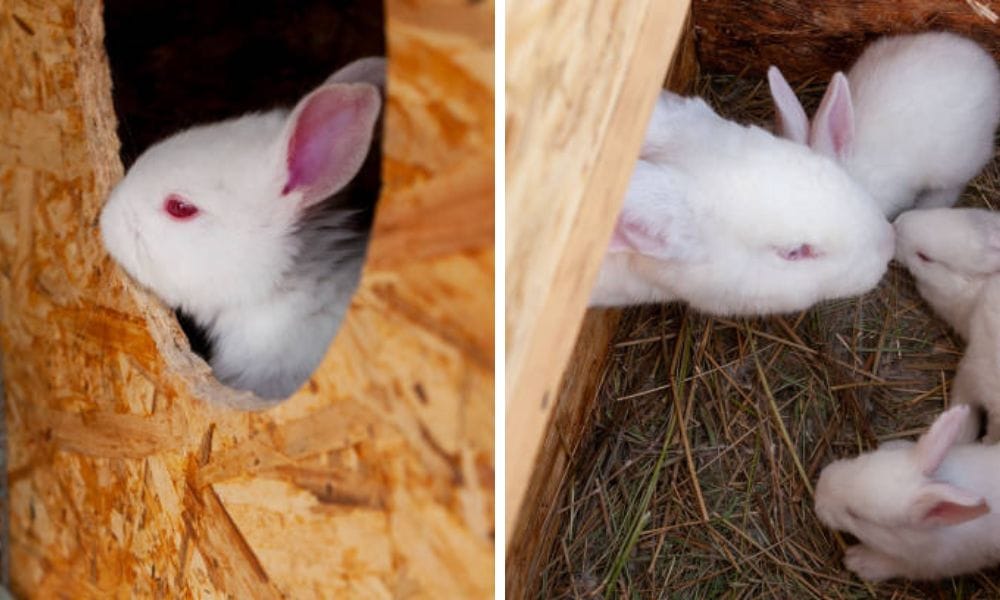
Easy Access for Cleaning
Maintaining a clean nest box is essential for the health of the rabbit and her offspring. Some nest boxes are designed to stay in the cage for a longer duration, providing a safe space for kits as they grow. A design that allows for easy cleaning will save you time and ensure a hygienic environment. Consider a nest box with a removable top or side to facilitate access. Additionally, the materials used should be easy to wipe down or replaced when necessary.
Weatherproofing for Outdoor Rabbits
If your rabbits live outdoors, their nest box must be weatherproofed to protect them from the elements. This means constructing the box with quality materials that can withstand rain and wind. Adding a lip to the entrance can prevent water from seeping in, and insulating the walls with straw or hay can provide additional warmth during the colder months.
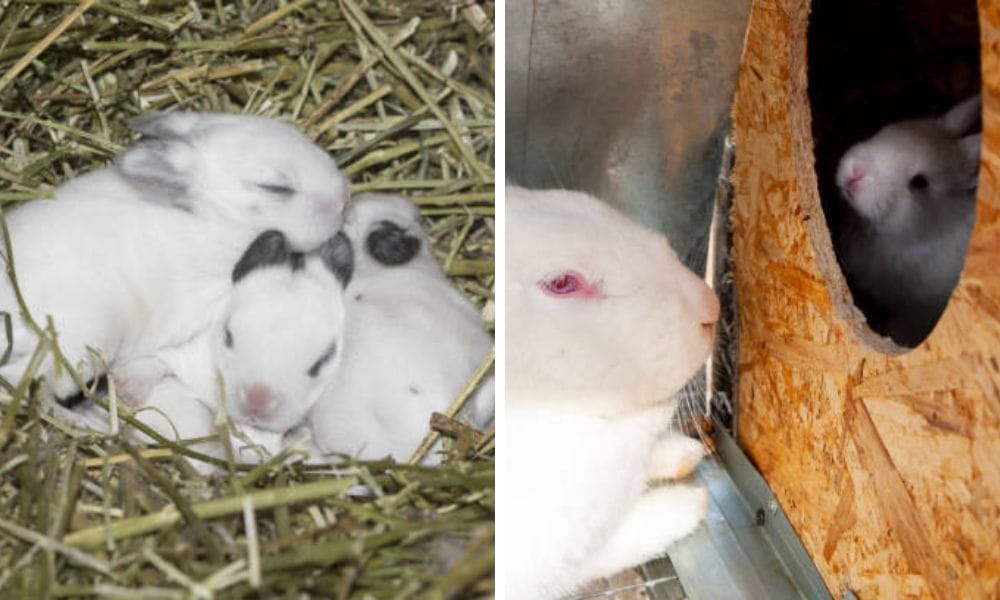
DIY or Store-Bought: Weighing Your Options
For those who enjoy DIY projects, building a rabbit nesting box can be a rewarding experience. There are numerous plans available online that can guide you through the construction process. On the other hand, if you prefer a ready-made solution, there are quality nest boxes available for purchase. Be sure to read reviews and select a product that is well-constructed and suitable for your rabbit’s needs. Gathering opinions from other rabbit owners or forming your own opinion based on your rabbit’s needs can also help you make the best choice.

The Finishing Touches: Making It Cozy
Once the structure of the nest box is complete, it’s time to make it cozy for your rabbit. Line the bottom with soft bedding, such as straw or hay, which can be easily replaced when soiled. You can fold the bedding or blanket to fit snugly in the box, ensuring proper placement and comfort. Watch for the doe to stuff her mouth with hay—this is a sign she is ready to build her nest. You can also add a soft blanket or fleece for extra comfort, especially during winter.
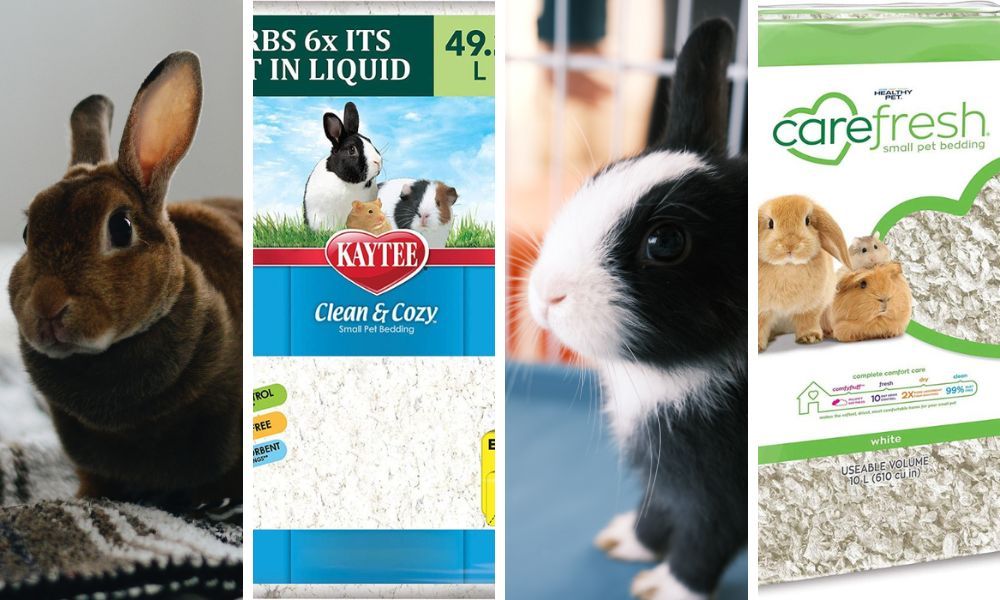
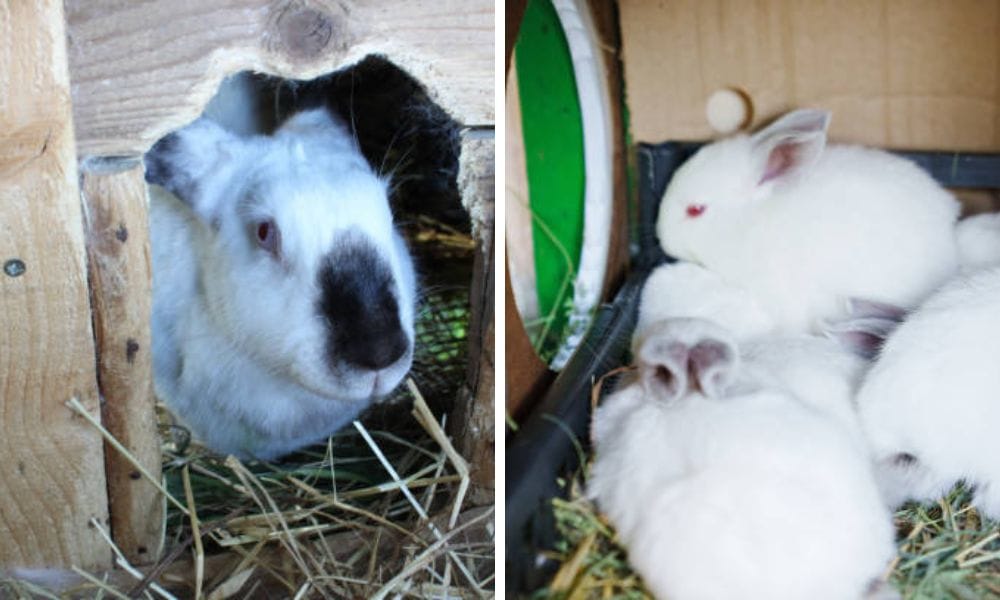
Rabbit Nest Box Info and Resources
When it comes to raising rabbits—whether you’re a seasoned homesteader, a meat rabbit breeder, or a pet owner—having the right rabbit nest box is essential for the health and happiness of your animals. A thoughtfully designed nesting box provides a safe, warm, and comfortable space for the doe to kindle and care for her kits, and it’s a must-have in any rabbit hutch or cage setup.
For those raising meat rabbits, it’s especially important to choose a nest box that offers plenty of room for the mother and her babies. The box should be large enough to prevent kits from being accidentally pulled onto the wire or cage floor, and the front should be high enough to keep the little ones safely inside. Bedding like pine shavings or straw helps keep the nest cozy and dry, while a separate litter box outside the nesting box makes it easier to keep the living area clean.
If you live in cold climates, extra insulation in your nest box is a game-changer. Many rabbit owners line their boxes with cardboard or feed bags beneath the bedding to help retain warmth during chilly nights. For added protection and ventilation, welded wire or hardware cloth can be used in the construction—just be sure to cover any wire flooring with a solid layer to protect sensitive rabbit feet.
Resources like Teal Stone Homestead offer excellent step-by-step instructions and ideas for building your own rabbit nest box. Whether you’re using plywood, wood, or even repurposing plastic bins or wire drop-down boxes, the key is to assemble the box carefully, making sure there are no gaps or sharp edges that could harm your rabbits. Drill a few holes for ventilation, and always attach the box securely to the cage floor to prevent tipping, especially if you have large rabbits or active does.
No matter what type of nest box you choose, regular cleaning and maintenance are crucial. Change out bedding frequently, and disinfect the box between litters to keep your rabbits healthy and prevent disease. A well-built nest box should be easy to clean, sturdy enough to withstand daily use, and sized to fit your specific cage or hutch.
If you’re looking for more rabbit nest box info, ideas, or inspiration, don’t hesitate to explore our website or follow us on Facebook for the latest content and updates on homestead living and animal husbandry. We love hearing from our readers—so if you have questions, tips, or opinions about nest boxes, please leave a comment below or link to your own projects!
Building or choosing the right rabbit nest box is one of the best ways to deliver quality care to your rabbits. With a little planning and the right resources, you can create a safe, warm, and inviting space for your rabbits to thrive—whether it’s a cold winter night or a dry summer day. So why not start today? Cut your materials, assemble your box with care, and attach it securely to your hutch or cage. Your rabbits will thank you, and you’ll enjoy the peace of mind that comes from knowing you’ve provided the very best for your furry friends.
Remember, a well-designed nest box is more than just a box—it’s a foundation for healthy, happy rabbits and a successful homestead. Read more about rabbit care on our site, and join our community for more ideas and support. Happy building!
Summary
Creating a cozy space for your rabbit involves careful consideration of materials, dimensions, and placement of the nesting box. By selecting the right materials, ensuring the box is the appropriate size, and placing it in a secure location, you can provide a comfortable and safe environment for your rabbit. Remember to design the box with easy cleaning in mind and weatherproof it if necessary. Whether you choose to build your own or purchase a pre-made box, the comfort of your rabbit should always be the top priority. Be sure to watch your rabbits for signs of comfort and proper nesting behavior to ensure the box is meeting their needs.
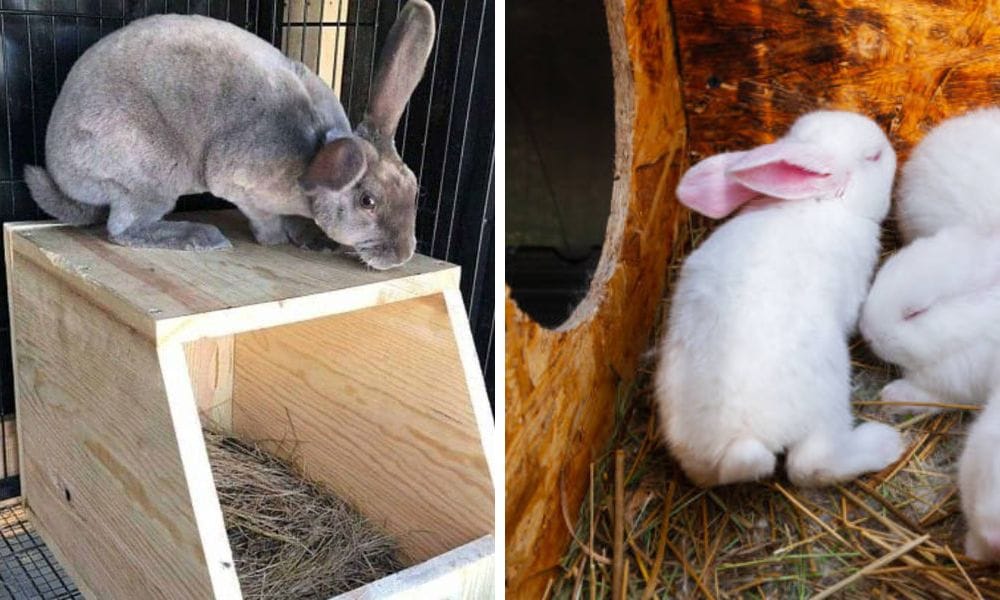
FAQ Section
Q: What is the best material for a rabbit nesting box? A: Untreated wood is an excellent choice for its insulation properties. Ensure the floor is covered with a solid material over hardware cloth to protect the rabbit's feet.
Q: How often should I clean the rabbit nesting box? A: The nesting box should be checked daily and cleaned as needed. Bedding should be replaced when soiled to maintain a hygienic environment for the doe and kits.
Q: Can I use a rabbit nesting box for meat rabbits? A: Yes, meat rabbits also require a comfortable nesting area, especially when breeding. Ensure the box is built with quality materials and is easy to clean to keep the rabbits healthy.FAQ Section
Q: What is the best material for a rabbit nesting box? A: Untreated wood is an excellent choice for its insulation properties. Ensure the floor is covered with a solid material over hardware cloth to protect the rabbit’s feet.
Q: How often should I clean the rabbit nesting box? A: The nesting box should be checked daily and cleaned as needed. Bedding should be replaced when soiled to maintain a hygienic environment for the doe and kits.
Q: Can I use a rabbit nesting box for meat rabbits? A: Yes, meat rabbits also require a comfortable nesting area, especially when breeding. Ensure the box is built with quality materials and is easy to clean to keep the rabbits healthy.
Q: What should I do when my rabbit has kindled and the kits are born? A: After your rabbit has kindled and the kits are born, ensure they are warm and safe in the nest box. Check that the mother has pulled enough fur for insulation and monitor the kits closely in the first few days.
Q: Is it safe to hold baby rabbits after they are born? A: You can gently hold the kits if necessary, but be careful and avoid handling them too much in the first few days to prevent the mother from rejecting them.
Q: How can I prevent kits from hanging on the doe or falling out of the nest box? A: Make sure the nest box has high enough sides and consider using a hanging nest box design to prevent kits from hanging onto the doe when she leaves or being accidentally pulled out.

